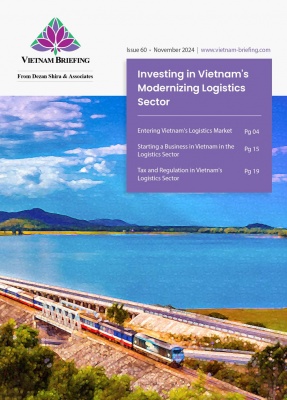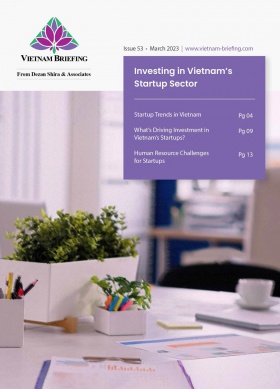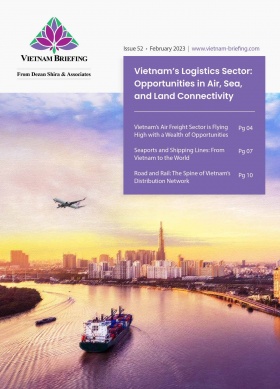Labor Market Continues to Recover in Q1 2023: GSO
Vietnam’s General Office of Statistics has released its report on labor and employment for the first quarter of 2023. Here’s what it says.
Vietnam’s labor market experienced positive growth in Q1 2023, as reported by Vietnam’s General Office of Statistics (GSO), with an increase in the labor force and employment rates, along with a decrease in unemployment and underemployment rates. Wages also showed improvement.
These trends indicate a favorable climate for attracting foreign investment, with a large labor pool to support economic growth. Here are the main highlights from the GSO’s report on labor and employment in Q1 2023.
The labor force continues to grow
In the first quarter (Q1) of 2023, Vietnam’s labor force increased by 88,700 people to reach a total of 52.2 million available workers – one million more people available to work than a year earlier.
In Q1 of 2022, Vietnam was only just emerging from the worst of pandemic lockdowns during which many workers left the bigger cities and industrial hubs. These current figures suggest the bulk of these workers have now returned to the workforce.
This is also reflected in the number of rural and urban workers. In Q1 this year, the urban labor force jumped by 121,000 workers whereas in the countryside the workforce dropped by 32,300. This is in line with an ongoing shift in Vietnam from an economy with agriculture at its heart to one where manufacturing takes a central role.
Labor quality remains steady
The number of trained workers with degrees or certificates was 26.4 percent in the Q1 2023. This was unchanged from the fourth quarter of 2022; however, it was a slight increase over Q1 2022.
This is one of the more important figures. Vietnam has long maintained that advancing into the high-tech industry is the next natural progression in its development, which in turn will necessitate a substantial supply of skilled labor.
Notably, in the Provincial Competitive Index 2022, which was released last week, finding managers and supervisors was flagged as being much more difficult than hiring low skilled labor. Education will be key to changing this reality, and these latest figures suggest that it is forthcoming, although showing just incremental growth.
Vietnam’s service sector remains popular among workers
Vietnam’s service sector in Q1 2022 employed 39 percent of Vietnamese workers or almost 20 million people. This was followed by the industry and construction sector, which covered 33.9 percent of workers, the equivalent of 17.3 million people. Finally, agriculture, forestry, and fisheries accounted for the last 27.1 percent or 13.8 million people – this was a decrease of 285,600 thousand people over Q4 2022.
Again, this highlights the shift from farming, fishing, and forestry in rural areas toward higher paying manufacturing jobs or service sector roles. The GSO report points out that the number of Vietnamese employed in the services sector and in industry and construction, increased by 38,100 and 360,900 people, respectively, during Q4 2022.
Wages are rising
The average monthly income of employees increased compared to the previous quarter and compared to Q1 2022. Across the board, the average monthly wage was 7 million VND (US$298) per month. This includes an increase of 197,000 VND (US$8.39) over the fourth quarter of 2022.
This increase, however, was not applied equally.
The services sector, for example, saw wages rise by 766,000 VND (US$32.63). This put the average wage of a services sector employee at 8.3 million VND (US$353.42). In contrast, in agriculture, fisheries, and forestry, the GSO found the average wage to be just 4.1 million, including an increase of 345,000 VND (US$14.69) – less than half of a services sector employee’s average wage increase.
Further, industry and construction came in right in the middle. Workers in these fields earned an average wage of 7.9 million VND (US$336) a month, including an increase of 655,000 VND (US$27.89).
Vietnam’s gender pay gap still exists
Aside from inconsistencies across sectors, there was also inconsistency across genders.
In general, men in Vietnam are paid 1.36 times more than women, each month. In real figures, this equates to male workers earning, on average, 8 million VND (US$340) per month. For female workers that figure is just 5.9 million VND (US$251).
For salaried workers, however, that gap closes significantly, though male and female workers are still not on par.
The average Vietnamese man on a salary receives 8.3 million VND (US$353) per month. This is 1.14 times the average Vietnamese woman on a salary, who receives just 7.3 million VND (US$310) per month.
See also: Gender Equality and Prevailing Challenges in the Workplace in Vietnam
Future of Vietnam’s workforce
For foreign firms, Vietnam’s relatively young, abundant, and low-cost workforce has made it an attractive destination for a broad range of tasks, and the manufacturing sector in particular. This looks set to continue for some time, but investors should bear in mind that wages in the country are rising and this is changing the dynamics of the workforce.
Moreover, in the long run, as more Vietnamese pursue higher education and upskilling opportunities, the talent base will change in character. In the near-term, however, recruiting at the top will remain challenging and on-the-job-training is advised to achieve better staff retention.
Overall, Vietnam is more than just lower cost labor. Incentives for establishing a business in the Southeast Asian nation are abundant, infrastructure is improving, as is the ease of doing business. In this regard, foreign firms considering Southeast Asia for future investments can contact the experts at Dezan Shira and Associates to gain a more comprehensive understanding of the challenges and benefits of setting up a business in Vietnam.
About Us
Vietnam Briefing is published by Asia Briefing, a subsidiary of Dezan Shira & Associates. We produce material for foreign investors throughout Eurasia, including ASEAN, China, India, Indonesia, Russia & the Silk Road. For editorial matters please contact us here and for a complimentary subscription to our products, please click here.
Dezan Shira & Associates provide business intelligence, due diligence, legal, tax and advisory services throughout the Vietnam and the Asian region. We maintain offices in Hanoi and Ho Chi Minh City, as well as throughout China, South-East Asia, India, and Russia. For assistance with investments into Vietnam please contact us at vietnam@dezshira.com or visit us at www.dezshira.com
- Previous Article Vietnam’s Provincial Competitiveness Index 2022: Key Takeaways
- Next Article VAT Reduction in Vietnam from 10 to 8 Percent Expected After Government Approval































